Period:
First World War
Region:
Ceska
Austro-Hungarian camp in Jindrihovice
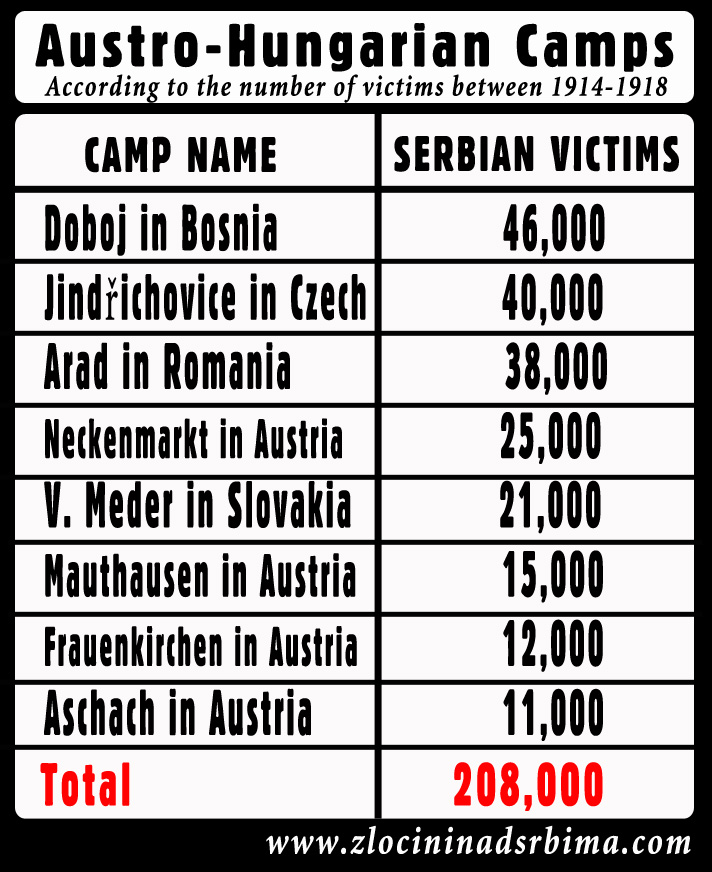 The camp Jindřichovice was the largest concentration camp ever established by the Austro-Hungarian authorities during World War I. It was located in the western region of the Czech Republic, along the border with Germany, near Karlovy Vary. There were soldiers and civilians from Russia, Italy, Romania, Lithuania, Serbia, and Bosnia and Herzegovina (Serbs). These arrests were made by Schutzkorps. The camp Jindřichovice was the largest concentration camp ever established by the Austro-Hungarian authorities during World War I. It was located in the western region of the Czech Republic, along the border with Germany, near Karlovy Vary. There were soldiers and civilians from Russia, Italy, Romania, Lithuania, Serbia, and Bosnia and Herzegovina (Serbs). These arrests were made by Schutzkorps.
In this death camp, more than 40,000 prisoners were detained, mostly Serbs who went through tremendous psycho-physical torture. The death toll is hard to determine since Austrian soldiers destroyed evidence, but it is estimated that around 10,000 Serbs (civilians and soldiers) were killed in Jindřichovice in four years. They were buried in several graveyards.
Also, in all death camps of Austro-Hungary were over 200,000 inmates during the war, out of which one third did not survive. Among the most famous Austro-Hungarian camps apart from Jindřichovice were: Broumov, Boldogassozony, Arad, Neusiedl am see, Doboj, Veľký Meder, Aschach, Olomouc, Mauthausen, etc.
The oldest victim was a 92-year old Serbian Orthodox priest, and the youngest was his grandson who was only 8 years old.
After the Great War, Czech authorities granted the camp and the area around it to the Kingdom of Yugoslavia, who maintained the graveyard and organized memorial services until the beginning of World War II.
After the war, Yugoslavian communist authorities did not care about the graveyards where Serbian victims were buried. It was not until 1994 that the embassy of SR Yugoslavia started an initiative for the reconstruction and renovation of the graves.
|
FIRST WORLD WAR 1914-1918 |
|
Battles of: Cer, Drina, Kolubara, Leget, Cemerno, Mojkovac, Kajmakcalan, Gornicevo, Dobro Polje
Camps: Mauthausen, Arad, Jindrihovice, Broumov, Boldogasonj, Nadjimer, Nezider, Aschah, Doboj, Sliven
Crimes: Macva, Surdulica, Great Retreat, Sabac
|
BACKGROUND
At the beginning of 1904, the Kingdom of Serbia signed a trade agreement with the USA, France and Russia... and began exporting its products to the overseas countries through the port of Thessaloniki.
This led to a great economic upswing of the Kingdom of Serbia, which annoyed the Vienna Court, which viewed Serbia as a great rival since Serbia had the highest economic growth rate in Europe at the time, and at the same time a large number of Serbs lived in the occupied territories of the Habsburg Monarchy.
Map of south-eastern Europe in November 1913.
The army of the Kingdom of Serbia liberated its enslaved territories (Raska, Kosovo and Metohija and Old Serbia) from the Turks in the First Balkan War, by achieving major victories in the fall of 1912 at the command of Duke Petar Bojovic at Kumanovo, Prilep and Bitola, and as such completely expelled the Ottomans from the Balkans.
And a year later in the summer of 1913 the army of the Kingdom of Serbia protected Vardar Macedonia from the Bulgarians in the Second Balkan War. The Serbian national revolution was thus continued, at the beginning of the 19th century by Karadjordje Petrovic and Milos Obrenovic.
In the summer of 1914, the Austro-Hungarian Monarchy used the Sarajevo assassination, that is, the assassination of Austrian Crown Prince Franz Ferdinand by members of Young Bosnia (Gavrilo Princip, Bogdan Zerajic, etc.) as an excuse to invade the Kingdom of Serbia, thus starting First World War.

Gavrilo Princip and his comrades in Sarajevo
A dispatch was sent from Vienna, which no sovereign state could accept. Thus, in late July 1914, Austria-Hungary declared war on Serbia. Montenegrin King Nikola I Petrovic and Russian Emperor Nikolai II Romanov immediately sent messages saying that they would help the Serbs. Likewise, German Emperor William II made a military alliance with the Vienna Palace.
ESTABLISHMENT
The Royal Palace of Vienna had ideas of establishing concentration camps even before any actual fighting happened, for the imprisonment of the enemy prisoners of war. One of these camps was established in the Czech Republic in November 1914. The first Serbian detainees were brought in 1915.
These tasks of arresting Serbs in Dalmatia, Dubrovnik, Bosnia, and Herzegovina, but also from the territory of the Kingdom of Serbia were executed by Schutzkorps – special military-police units formed in 1908 and consisting mostly of Bosnian Muslims and Croats.
They also imposed tremendous evils in Mačva, Podrinje, and Herzegovina upon the Serbian people.
From all parts of Serbia, both soldiers and civilians were taken by rails to the camp of Arad, and most of them were from Šumadija and Valjevo area.
CAMP CONDITIONS
The conditions in Jindřichovice were extremely cruel and inhumane.
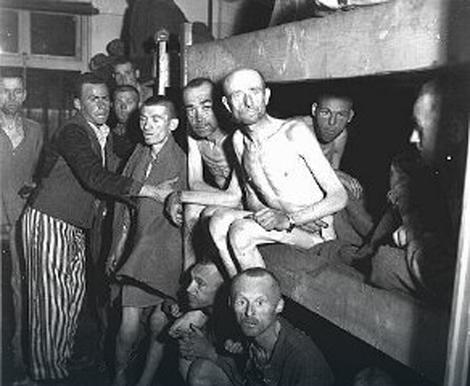
Inmates were forced to do the hardest labor tasks: Build a water tank in the camp, work in stonepits, build roads and bridges, build a chemical factory in Sokolovo, a city which is 30 km away and to which inmates had to walk towards and back every single day.
The camp was special in the sense that not a single inmate was killed from a firearm, but the conditions were extremely harsh. It was cold and diseases were spreading quickly. The death toll was around 40 people per day. Each day at 15:00 a sad procession could be seen going towards a nearby joint graveyard, in which bodies of all ages were laid, from children to elderly.
In this camp, for a short while, a communist activist Dimitrije Tucović was imprisoned, but the Spanish socialists quickly rescued him with the help of the Red cross.
DEATH TOLL
The exact death toll is hard to determine. The greatest casualties were among Serbians- 10,000 approximately, out of which more than 2,500 were women. Also, 1,300 Italians and 230 Russians were found buried.
Known names:
-
Čedomir Glišović (1894-1918) from Čačak, teacher and reserve corporal in the armed forces of the Kingdom of Serbia.
-
Radomir Todorović (1890-1918) from Ropočevo near the city of Sopot.
-
Bozidar Rajković (died 1918) from Požarevac.
TESTIMONIES
Sava Rajčić (born in 1891), a soldier of Drina division from Petrovac, served in the ninth infantry regiment, IV unit, II Battalion, was captured near Glavice on 16th October 1915, when Austro-Hungarian forces attacked Serbia with 900,000 troops.
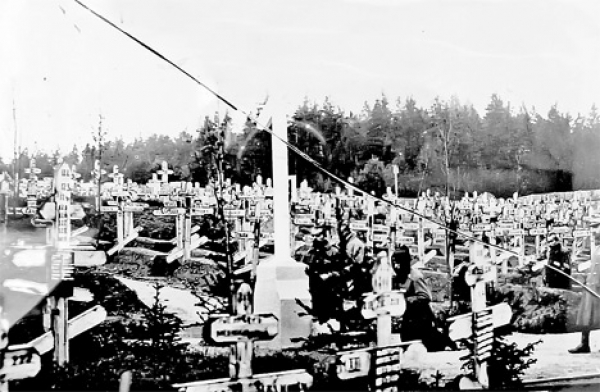
Rajcic was taken to Jindřichovice, where he was held for 5-6 months.
- “The food was terrible, we received half a loaf of bread every 2 days. We were not given any clothes or shoes; many were walking around in rags or barefoot. Around 150-200 of us were held in one single cottage. Winters were fierce. There were 2 heaters in each shed, which were almost never used.
You can only imagine how cold it was, imagine giant wooden cottages while the wind howled through the cracks, causing us to freeze during nights, which made sleeping impossible. The guards were treating us inhumanely, for them we were nothing but beasts they used to beat with no mercy for the slightest mistakes. Many of our soldiers died from the wounds inflicted by the beatings or were left disabled.
Hungarian guards were hitting my head, back, and arms with the butt of a gun because I told them that they had not conquered us and that our king was still leading our armies. As a result, I was left permanently disabled…”.
Borisav Nastasović, a soldier of the Dunav's division of serbian army in sanitary service of the seventh infantry regiment, born in Braničevo near Požarevac, added:
- “Life was very difficult in the camp, the food was the worst possible, a piece of bread, watery soup, we could barely move our legs or maltreatment followed. As far as the beatings went, the Hungarians were the worst…”.
CLOSURE
Camp Jindrichovice, dungeon of death was closed after First World War.
Today it is a memorial complex.
YEARS LATER
The first time that any Serbian authority went to visit this death-zone was Queen Maria Karadjordjevic in 1926 when she was visiting Karlovy Vary, then she got interested in renovating the graveyard.
Serbian war cemetery (mausoleum) in Jindřichovice was consecrated on 8th July 1931 under the sponsorship of Tomáš Garrigue Masaryk, the president of Czechoslovakia and King Aleksandar I Karadjordjevic.
Until the year of 1937... 7,570 total remains of Serbian and Russian soldiers, more specifically 7,381 Serbs and 189 Russians.
The monument ossuary was created under the project of the architect professor engineer Vladimir Brandt, while the monumental chapel in the inside of the ossuary is the work of architect Joseph Kostalka.
The mausoleum in Jindřichovice today is nearly forgotten. It is visited by scarce Serbian field trips, some national service members, or relatives of the deceased. No delegation from socialist Yugoslavia has ever visited this cemetery and mausoleum in Jindřichovice.
UPKEEP
Inadequate maintenance after World War II and the test of time have brought the mausoleum to a very poor condition, it has a leaking roof and a threat of demolition. Property laws also are an issue for the compound of mausoleum Jindřichovice according to the Geneva convention military graves are not to be touched for a period of 100 years. This period expired 2 years ago and the Serbian government has still done nothing to preserve it.
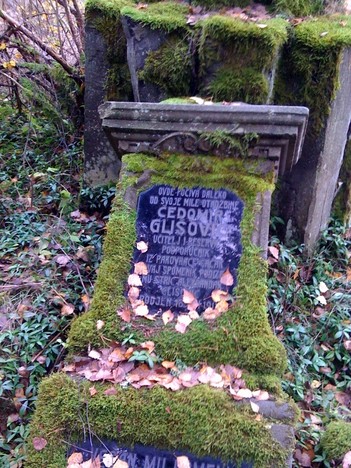
Two persons have given a notable contribution over the past several years so that Jindřichovice is not forgotten:
* Dejan Randjelović, Serb from the Timochka area, who lives with his family in Karlovy Vary, also the president of Orthodox youth in the Czech Republic.
* Vidoje Golubović, Serb from Belgrade, also the president of the Society of war volunteers 1912-1918, their descendants and admirers.
The people of the Czech Republic, in 1998 donated 100,000 DEM for the renovation of this cemetery. Later the Russian Federation, in 2011 has given significant means for the renovation of the mausoleum.
INTERESTING FACTS
Jindřichovice was the place of residence of the aristocratic family Nostić (from the Habsburg dynasty), which was settled here from the 15. century until 1948, when the Czech communist confiscated their land and forced them into exile to Austria. This fact has an indirect link with the Serbian history.
Namely, quickly after the assassination of Franz Ferdinand by Gavrilo Princip, the oldest daughter of Ferdinand – Sophia, got married to one of the Nostić and began her life in Jindřichovice. She desired to watch the agony and death of the “people who killed her father”.
In this camp, there were Serbs of Muslim faith, who were held in the city of Novi Pazar in Raška region.
In the ‘70s and ‘80s of the 20th century, the keeper of the memorial compound of Jindřichovice was a man whose father was a guard in that camp.
INJUSTICE
On the memorial ossuary in Jindřichovice, an engraved inscription stands on a black marble plate with golden letters showing how on that spot 7,100 Yugoslavs have died(!?), instead of Serbs…
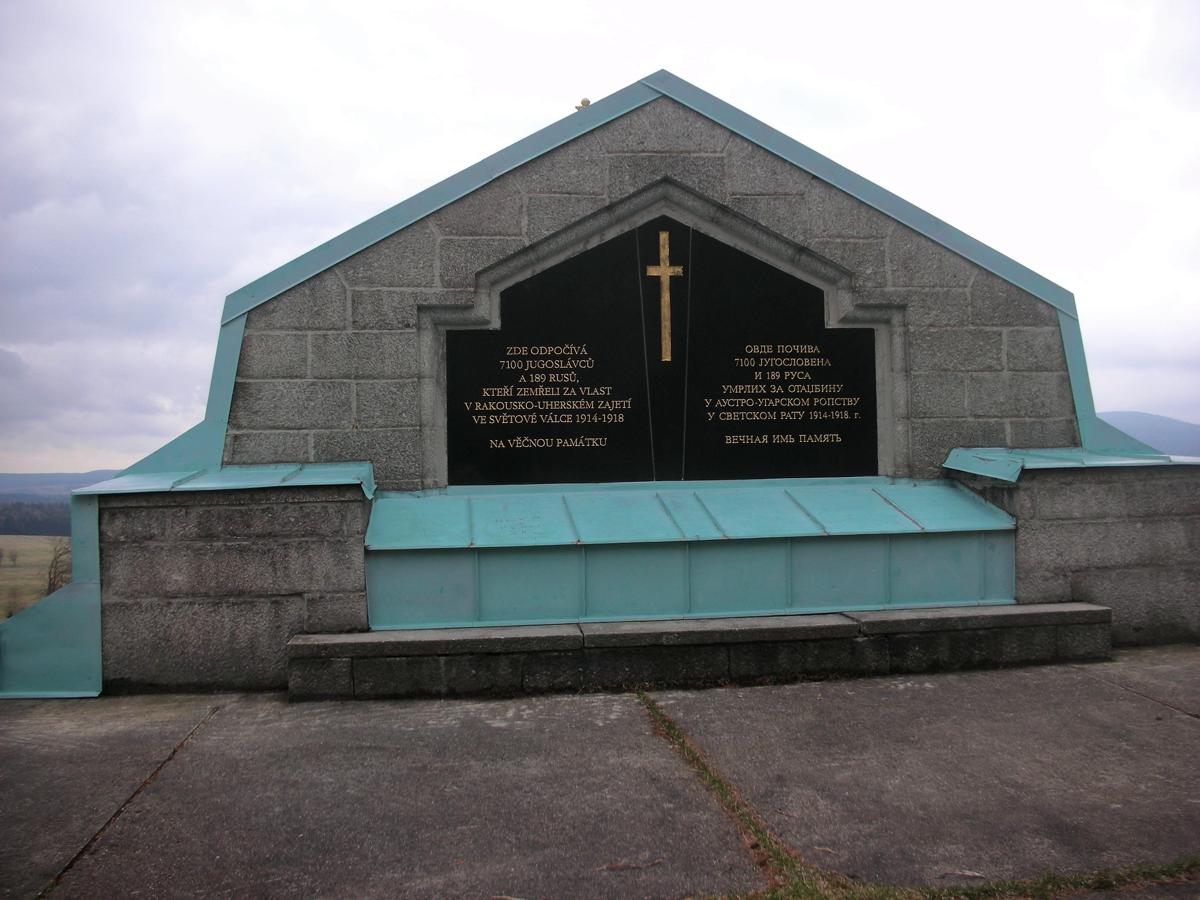
With this act, our citizens who ordered the memorial plate tried to hide the genocide of Serbs for the ideal of brotherhood and unity of the Yugoslav peoples.
The fact is that Austro-Hungarian authorities didn’t prosecute Slovenes and Croats in this camp, but exclusively Serbs. Moreover, many Croats fought alongside the Royal Palace of Vienna during World War I. The 42. homeland defense unit consisted of Croats and Slovenes, which during World War I had received the nickname “devilish”.
PUBLICATIONS
Director Sanjin Marić, who lives in the Czech Republic, has filmed in 2019 a feature documentary film “Seven thousand souls”, in which he has described, in a special way, the horrors of this dungeon.
The film was supported by the Ministry of Culture of the Republic of Serbia, and it collected many awards at international festivals.
Tags:
Please, vote for this article:
Visited: 3340 point
Number of votes: 10
|